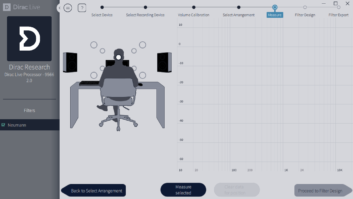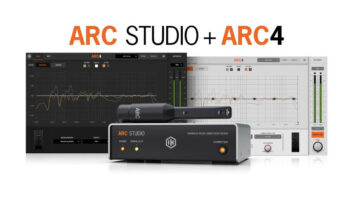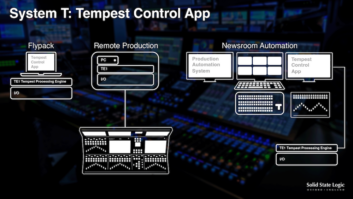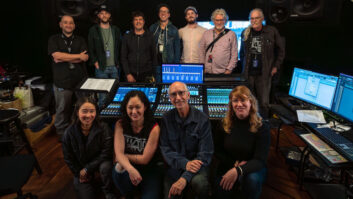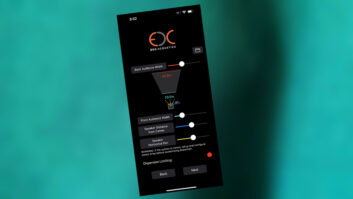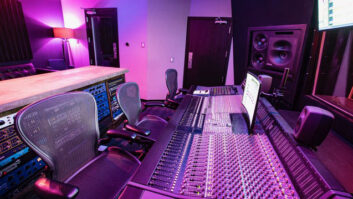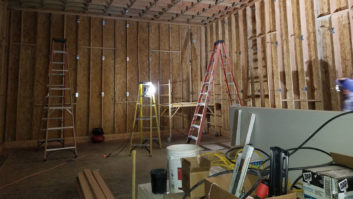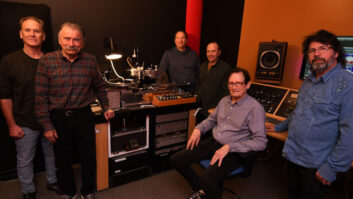
Uppsala, Sweden (April 27, 2020)—Dirac threw its hat into the control room correction ring at NAMM 2020, launching a version of its Dirac Live product intended for the pro audio market—a first for the Swedish audio technology company. Room correction products are nothing new, of course, but product manager, High Performance Jakob Ågren believes Dirac Live has an edge over the competition.
Dirac Research was founded almost 20 years ago as a spinoff of Uppsala University in Sweden, where six professors and Ph.D. students were working on a telecommunications project that would become the 4G standard of cellular data network technology. Still headquartered in Uppsala, the company now has a regional headquarters in Shanghai, China, with branches in Beijing and Shenzhen, plus a research and development facility in Copenhagen, Denmark.
None of the original team members had an audio background, says Ågren, “But they had these advanced mathematical and physical methods for wave propagation.” They entered a startup competition and won, and Dirac was off and running.
Dirac Research Nets $13.2 Million in Financing
The initial plan was to develop technology that would make it possible to build a cheaper speaker by saving on the cabinet construction, transducers and crossover design, correcting those deficiencies through DSP, he says. The catch was that at that time, DSP solutions were still too expensive, defeating the whole purpose of a budget speaker.
The corrective algorithm, Dirac Live, instead found its first application in the automotive industry. BMW was the first to adopt it, in 2004, also using it in the Bentley and Rolls-Royce brands that the company owns. Then came the recession, car sales dried up and Dirac had to once again look elsewhere.
The company took the technology to the smartphone industry, leveraging onboard DSP to improve the performance of built-in speakers and attached headphones. As of last year, the technology was used in close to a quarter of a billion smartphones, Ågren reports.
Audiophiles also embraced Dirac Live, as did the home theater and commercial cinema markets. The technology is licensed in JBL, Lexicon, NAD, miniDSP and other products, and has almost a decade of well-received and well-reviewed use in the consumer sector, he says.
“What was missing was something that makes it appealing for the studio market, so we developed a set of audio plug-ins that people can use in their digital audio workstation.”

Unlike the home market version, Dirac Live for Studio is an all-software solution—a plug-in that is available in VST, AAX and AU formats and can be installed on popular DAWs. The room correction process is similar to other products on the market: Measure the room and audio systems with a microphone in the Dirac Live calibration software, export the filter to the audio plug-in and apply. (In the home version, filters are stored in hardware.)
“The Dirac Live controller is a mixed-phase controller,” says Ågren. “That means our target is a time domain target—a target impulse response, not a target magnitude curve. What you get with our competitors is a very well controlled magnitude response, but you cannot correct for phase using an EQ, so you must have mixed-phase filters. That’s our unique advantage.”
Dirac Live does not ship with a microphone; instead, the company recommends using the miniDSP UMIK-1, an omnidirectional USB measurement mic. “Not because we are affiliated in any way, but it has been used with our product for eight years, so we know it’s extremely robust for this application,” says Ågren. “If you would rather use another microphone and you have a calibration file for it, go ahead and use it,” as long as it’s omnidirectional.
Choosing the seating mode dictates the size of the area to be calibrated and thus the number of measurement positions required. “Our recommended minimum is five points,” he says.
“When you’re happy with the number of measurement points, you go to the filter design page. This is another area where we are different from our competitors. A room correction product is a little strange—it’s a software that promises that if you measure your speakers in a room using a microphone, the software is going to make it sound better. That’s quite a bold statement. A microphone doesn’t know what music sounds like, and it doesn’t know your preferences. Unless the goal is to make everything sound the same—which is impossible, by the way—there must be some way for the user to say, ‘This is the sound I want.’ We call that concept the target curve.”
There is a default target curve, he says, based on decades of listening tests, but the user can also draw a desired frequency response curve. “You can tailor the sound to your liking, but it will still be under control from a room perspective. We try to take away the room and still give you the control to get your preferred sound.”
In this new studio version, he says, “we support eight different profiles. You can switch between them for multiple different monitors, or maybe you want a different sound depending on the type of music, or for listening in different positions in the studio.”
The system’s mixed-phase filters can significantly improve transients, he says. “You’re going to have much more clarity. The timbre of voices, for instance, is extremely dependent on the phase of the system. Also stereo imaging; the most important property for good stereo reproduction is to have a high degree of phase similarity between the left and right speakers. Having a measurement method that deals with these issues makes all the difference.”
Dirac Live for Studio • https://live.dirac.com/pro-audio
